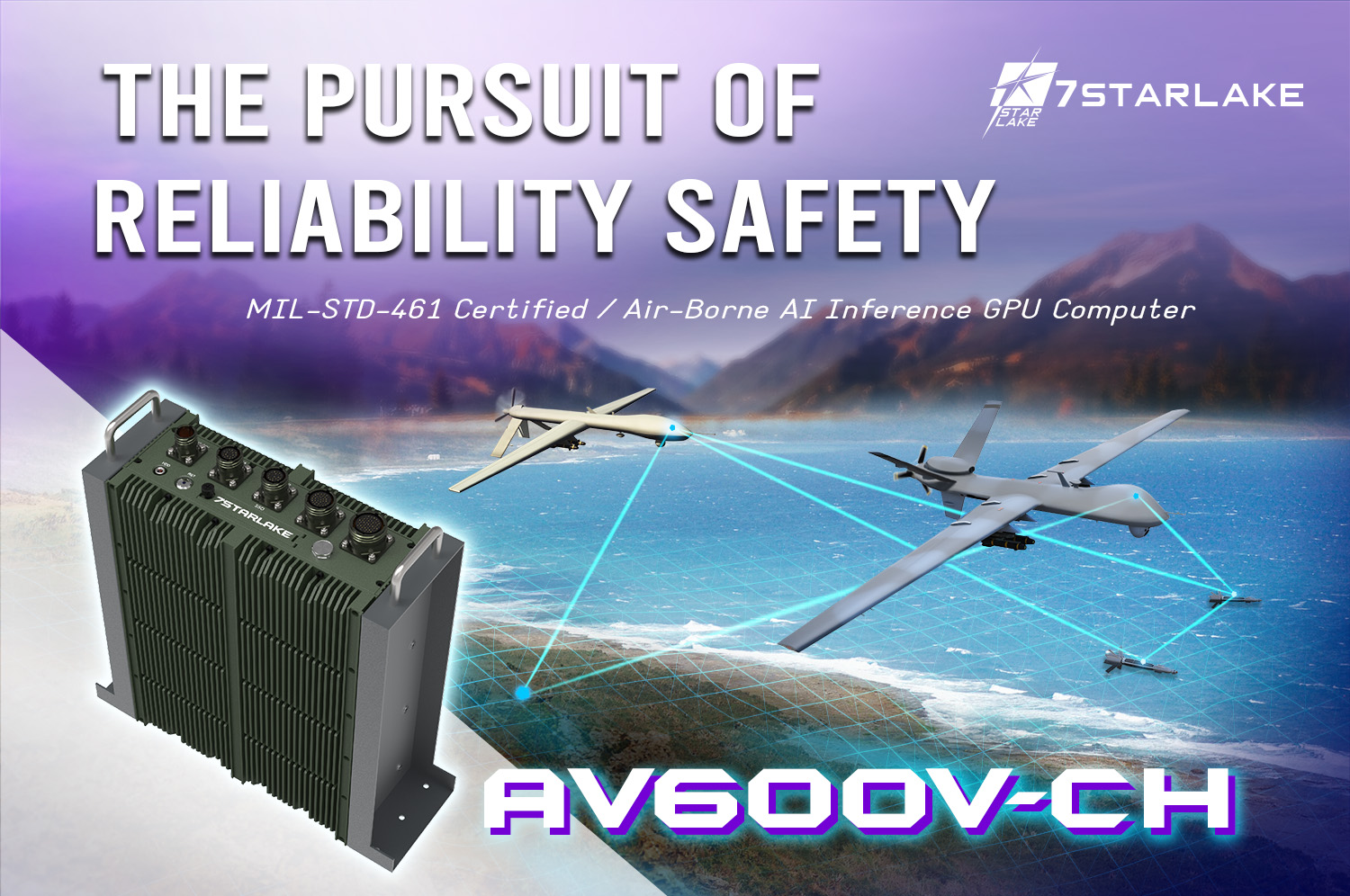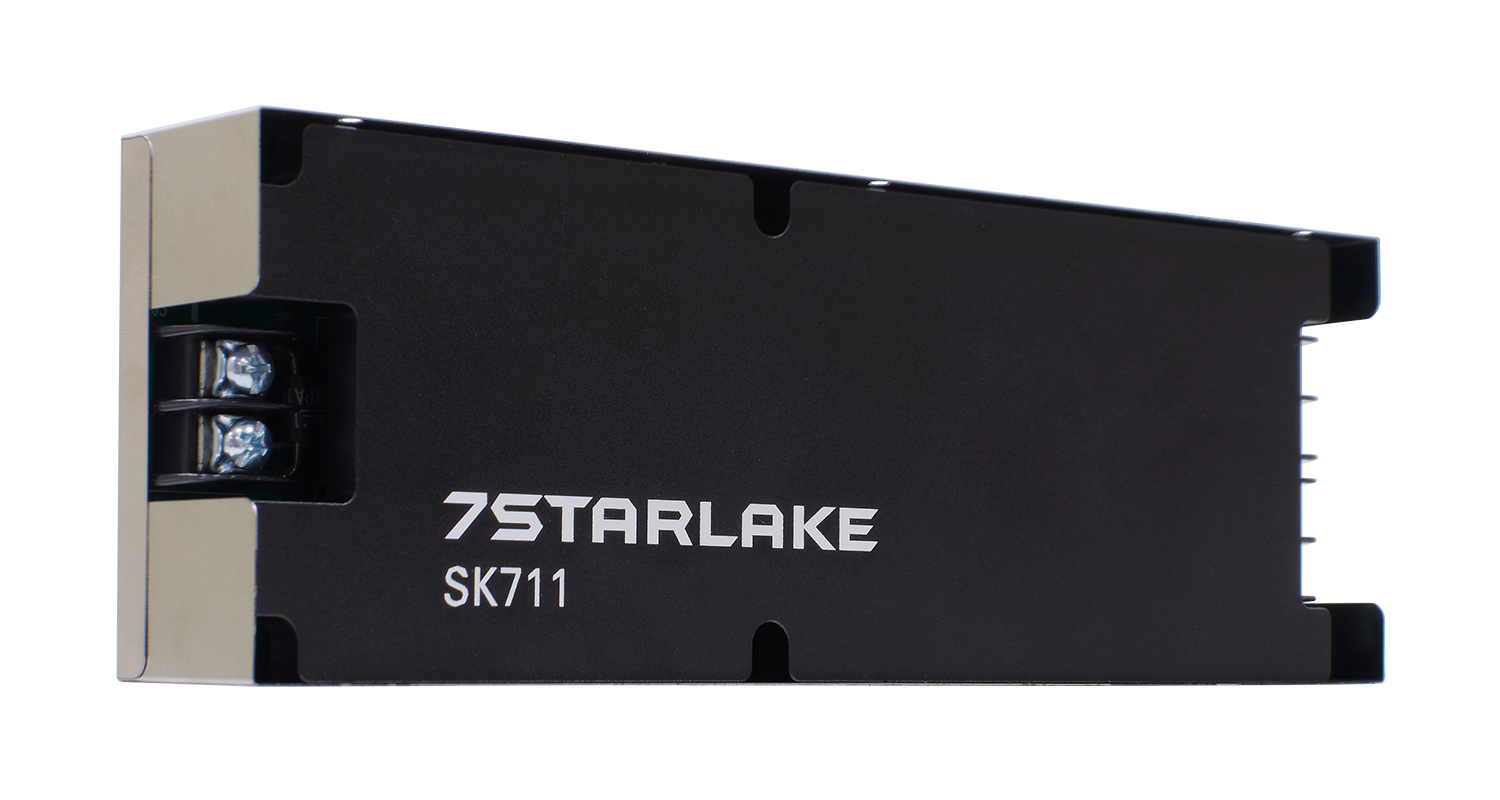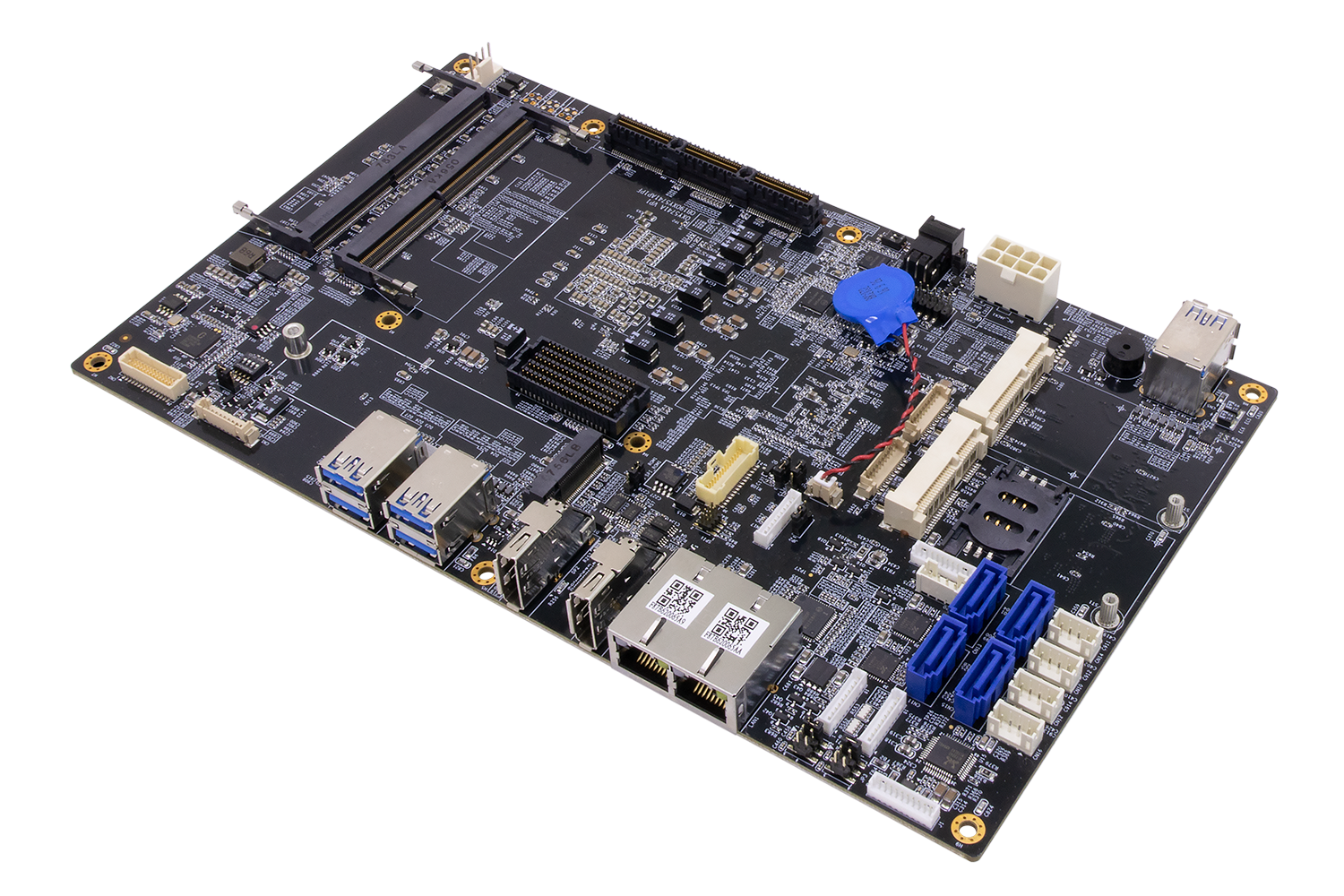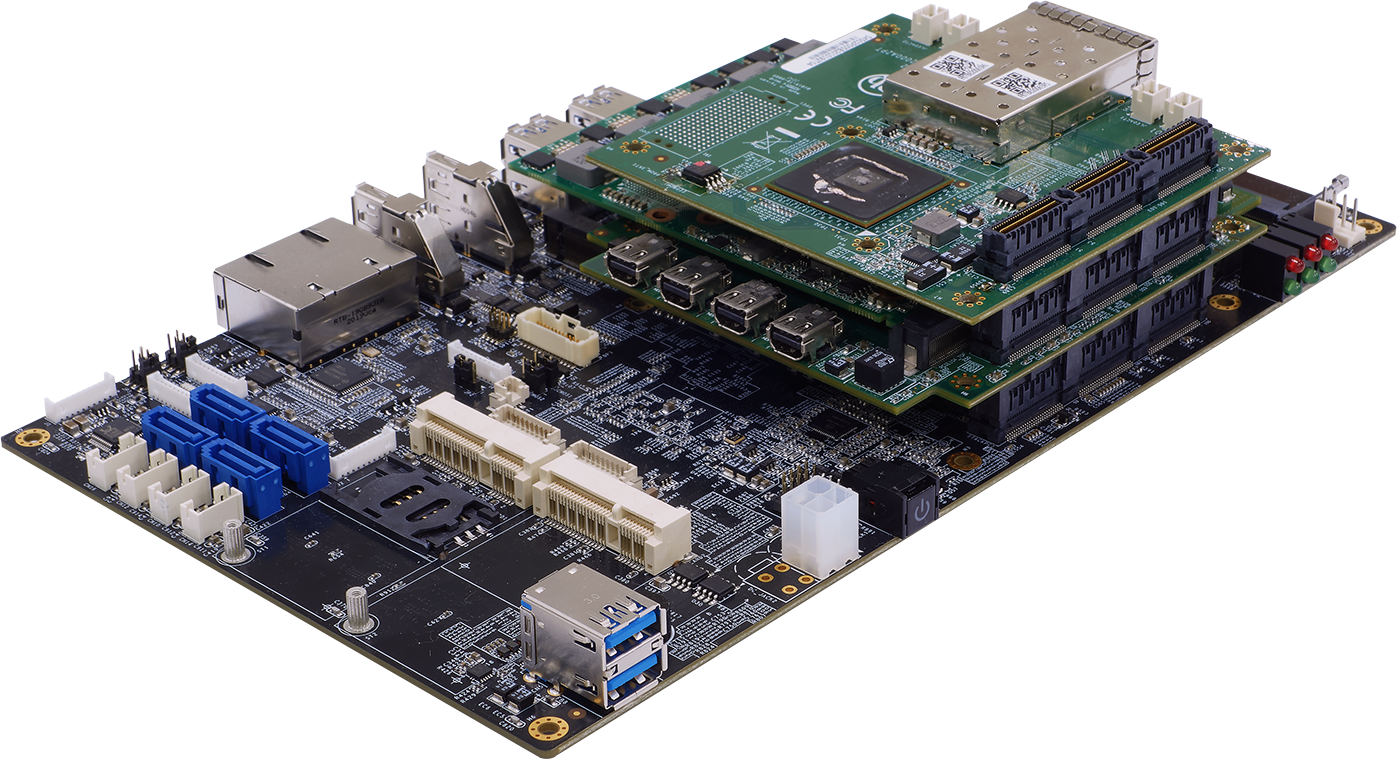AV600V-CH
Refer 3/4 Short ATR GPU COMPUTER
- Intel 9th Gen. Xeon E-2276ME (6 cores, 4.5GHz)
- High Memory Capacity DDR4- 128GB
- NVIDIA QUADRO MXM A4500 (16GB-GDDR6, CUDA 5888)
- MIL-STD 810 Anti-Vibration, Shock
- IP65 Rating with M12 Connectors
- Extreme Temperature -40°C to +60°C
- MIL-461 18V~36V DC-DC 300W
- MIL-STD 810 500.6 Low Pressure Altitude
Special Request :
- Optional IP66
- Frame Grabber : 4x CH HD-SDI
- Discrete IO : 4x DI/4x DO
- 10GbE : Dual 10GbE (Intel X710) Ethernet Ports
- MIL-1553 , ARINC 429

- Technical Profile
- Specifications
- Download
- Introduction
-


Artificial Intelligence (AI) is accelerating the tactical capability of the military more than ever before. Many new combat and weapons systems utilize embedded AI, making them more efficient and less dependent on human operation.
Furthermore, SWaP (Reduced Size, Weight, and Power) requirements are also impacting artificial intelligence design. Now and in the future, many military systems will be susceptible to SWaP-constraints, which challenge the assumptions of today’s AI solutions.
7Starlake excels in designing unparalleled military computers for harsh environments. From polar regions to the desert, from jungle environments to high altitude, 7Starlake’s rugged computers have the capability to withstand the operational environment. Tested to MIL-STD standards exacting levels of conformity, 7Starlake products can operate at full capacity in extreme conditions. 7Starlake believes in meeting 100% of our customers’ expectations for the design, quality of build, and customer service levels in the supply of rugged and custom-built computer systems.
- MIL-STD 810G & Full IP65 protection
-
AV701 is designed to meet strict SWaP requirements and to withstand harsh environments, including extreme temperature, shock/vibration, sand/dust, and salt/fog. With ruggedized design and high functionality, the IP65 and MIL-STD resistance AV701 is the ideal tactical vehicle on the battlefield.

- Why does MIL-STD 461 matter

On the battlefield, where every second counts, a rugged HPEC connected to multiple sensors should be capable of tackling all affairs simultaneously in regard to processing a great amount of data identity, sorting data, and passing along the correct path. In this frame, EMC ability is undoubtedly indispensable. MIL-STD-461 testing offers an added layer of EMI protection for military systems and reassurance to military personnel that their systems won’t be disrupted by EMI.
No matter what kind of robust CPU/GPU configuration a client requests, such as Intel XEON plus NVIDIA Quadro, or Intel Xeon Scalable paired with NVIDIA Tesla T4, TDW might become 500W even up to 1000W. That may present a big challenge for both power and thermal system design. Despite such challenges, the 7Starlake team continues to produce high-spec and unrivalled MIL-STD-461 computing systems by using the full range of EMI filter power modules. These include both the SK710 (10V-40V 150W) and SK711 (18V-36V 300W) which succumb to and pass the strictest and most rigorous EMI/EMS tests.

- System main board : EBX SBC-OXY5741A
-

The EBX SBC OXY5741A provides extraordinary computing performance under extreme environment. It is powered by 9th / 8th Gen Intel® Xeon® / Core ™. Featuring Intel’s Xeon E-2276ME and ruggedised open-standard EBX architecture, 7StarLake EBX series is built tentatively and triumphs on environmental testing. It still operates effectively under harsh environments ranging from -40 to 85°C so that it is a perfect solution for defence, transportation, and automation applications. More key functions such as stackable PCIe/104 expansion ability, flexible I/O, and NVMe Gen 3.0 PCIex4 for fast and large capacity storage, all contribute to this versatile architecture that can meet clients’ needs.
Choosing an embedded architecture for computer systems can be a formidable task. This kind of stackable and mezzanine architecture often results in tradeoffs that include off-the-shelf or custom design requirements. PCIe/104 compact, ruggedised, easily expandable traits support a lot of expansion flexibility in systems. This architecture evolved to address these resulting issues by keeping the common background while eliminating limitations. OXY5741 employs PCIe/104 technology to reduce constraints and create flexibility of expansion. Its M.2 extension offers M-key (M-Key 2280 optional), and PCIe 3.0 x 4 NVMe. Additionally, OXY5741 provides 3.0 ports for data redundancy by supporting RAID 0/1.

- NVIDIA GeForce RTX 2060 Super
-
AV701 supports NVIDIA® GeForce® RTX 2060 SUPER™ which is powered by the NVIDIA Turing™ architecture, bringing superfast all-around performance and graphics to every gamer and creator. It’s time to gear up and get super powers.

- CE Verification

|
System |
|
|---|---|
|
CPU |
INTEL 9th Gen. XEON 2276ME (6 cores, 4.5GHz) INTEL 9th Gen. i7-9850HE (6 cores, 4.4GHz) |
|
Memory type |
4x SO-DIMM DDR4 2666 MHz up to 128GB |
|
GPU |
NVIDIA QUADRO MXM A4500 (16GB-GDDR6, CUDA 5888) |
|
Storage |
|
|
Storage 1 |
1x NVMe (M.2), up to 2TB |
|
Storage 2 |
1x mSATA, up to 1TB |
|
Front I/O |
|
|
USB |
2x USB, DTL38999 connector |
|
Ethernet |
2x LAN, DTL38999 connectors |
|
Series Port |
2x COM, DTL38999 connectors |
|
DVI |
2x DVI, DTL38999 connector |
|
DC-IN |
1x DC-IN 18V~36V, Rugged M12 connector |
|
Physical |
|
|
Dimension |
250(W) x 325(L) x 111(H) mm |
|
Power Requirement |
|
|
Power Input |
18V~36V DC-DC 300W |
|
Applications, Operating System |
|
| Applications | Military Platforms Requiring Compliance to MIL-STD-810 Where Harsh Temperature, Shock, Vibration, Altitude, Dust and MIL-461 EMI Conditions. |
| Operating System | WIN10 ,WINDOWS SERVER2016, UBUNTU 18.04,UBUNTU20.04 |
|
Environmental |
|
| Green Product | RoHS, WEEE compliance |
| Operating Temp. | -40°C to +60°C |
| Storage Temp. | -40°C to +85°C |
| Relative Humidity | 5% to 95%, non-condensing |
| MIL-STD-810 | Method 507.5, Procedure II ( Temperature & Humidity ) Method 516.6 Shock-Procedure V Non-Operating ( Mechanical Shock ) Method 516.6 Shock-Procedure I Operating ( Mechanical Shock ) Method 514.6 Vibration Category 24/Non-Operating ( Category 20 & 24, Vibration ) Method 514.6 Vibration Category 20/Operating ( Category 20 & 24, Vibration ) Method 501.5, Procedure I ( Storage/High Temperature ) Method 501.5, Procedure II ( Operation/High Temperature ) Method 502.5, Procedure I ( Storage/Low Temperature ) Method 502.5, Procedure II ( Operation/Low Temperature ) Method 503.5, Procedure I ( Temperature shock ) |
|
Reliability |
No Moving Parts; Passive Cooling. Designed & Manufactured using ISO 9001 Certified Quality Program. |
| MIL-STD-461 | CE102 basic curve, 10kHz - 30 MHz RE102-4, (1.5 MHz) -30 MHz - 5 GHz RS103, 1.5 MHz - 5 GHz, 50 V/m equal for all frequencies |
|
EMC |
EN 61000-4-2: Air discharge: 8 kV, Contact discharge: 6kV |
| Attachment | Size |
|---|---|
| US20160231790A1 - PCI-104_0_1.pdf (1.14 MB) | 1.14 MB |
| AV600 MIL-810 514.6 Operation_1_0.pdf (1.4 MB) | 1.4 MB |
| AV600 MIL-810 514.6 None-Operation_1_0.pdf (1.38 MB) | 1.38 MB |
| 7StarLake_CE Verification_AV600_2.pdf (148.75 KB) | 148.75 KB |
| 7StarLake_CE TEST REPORT_AV600_EN_2.pdf (4.21 MB) | 4.21 MB |



